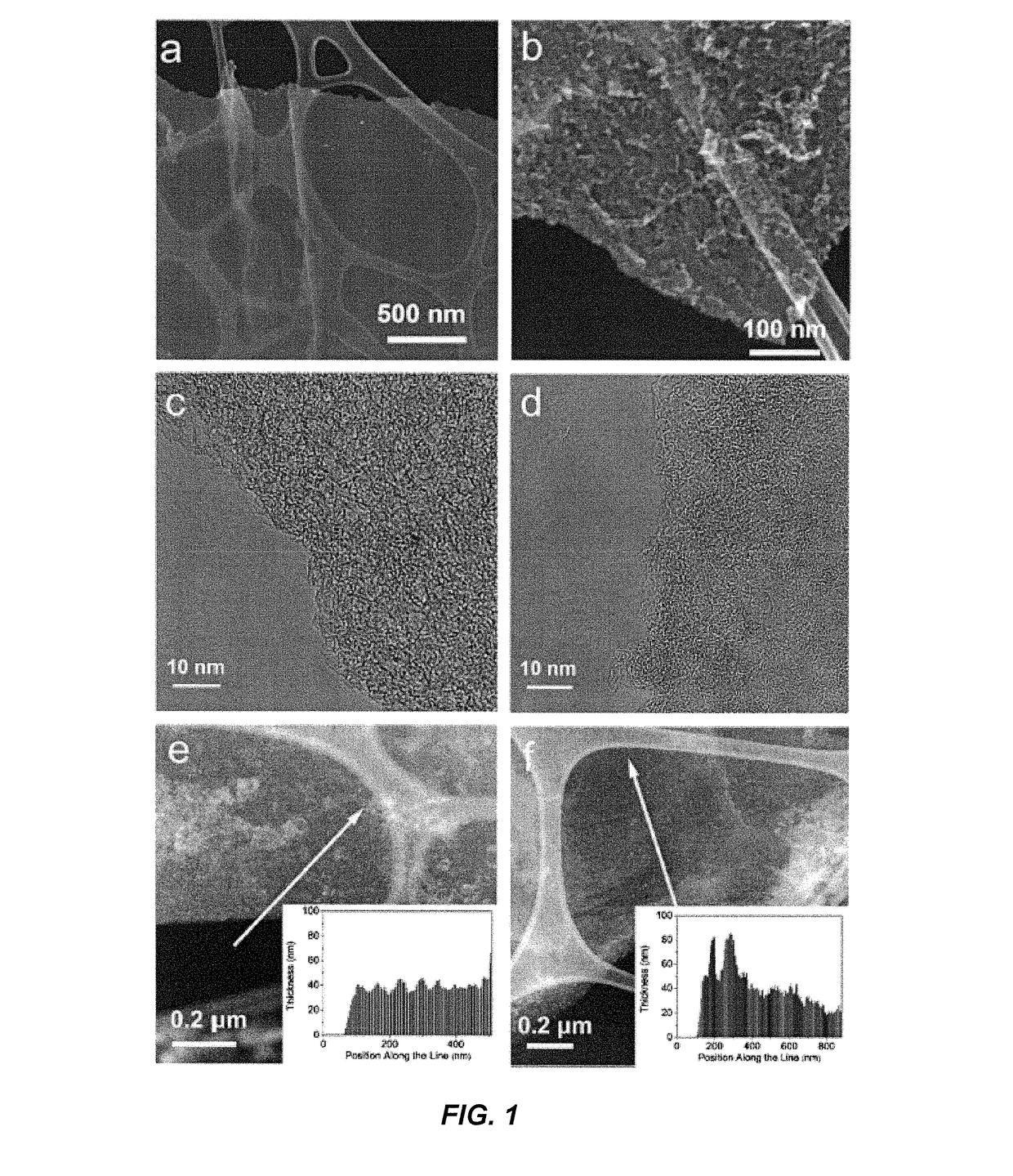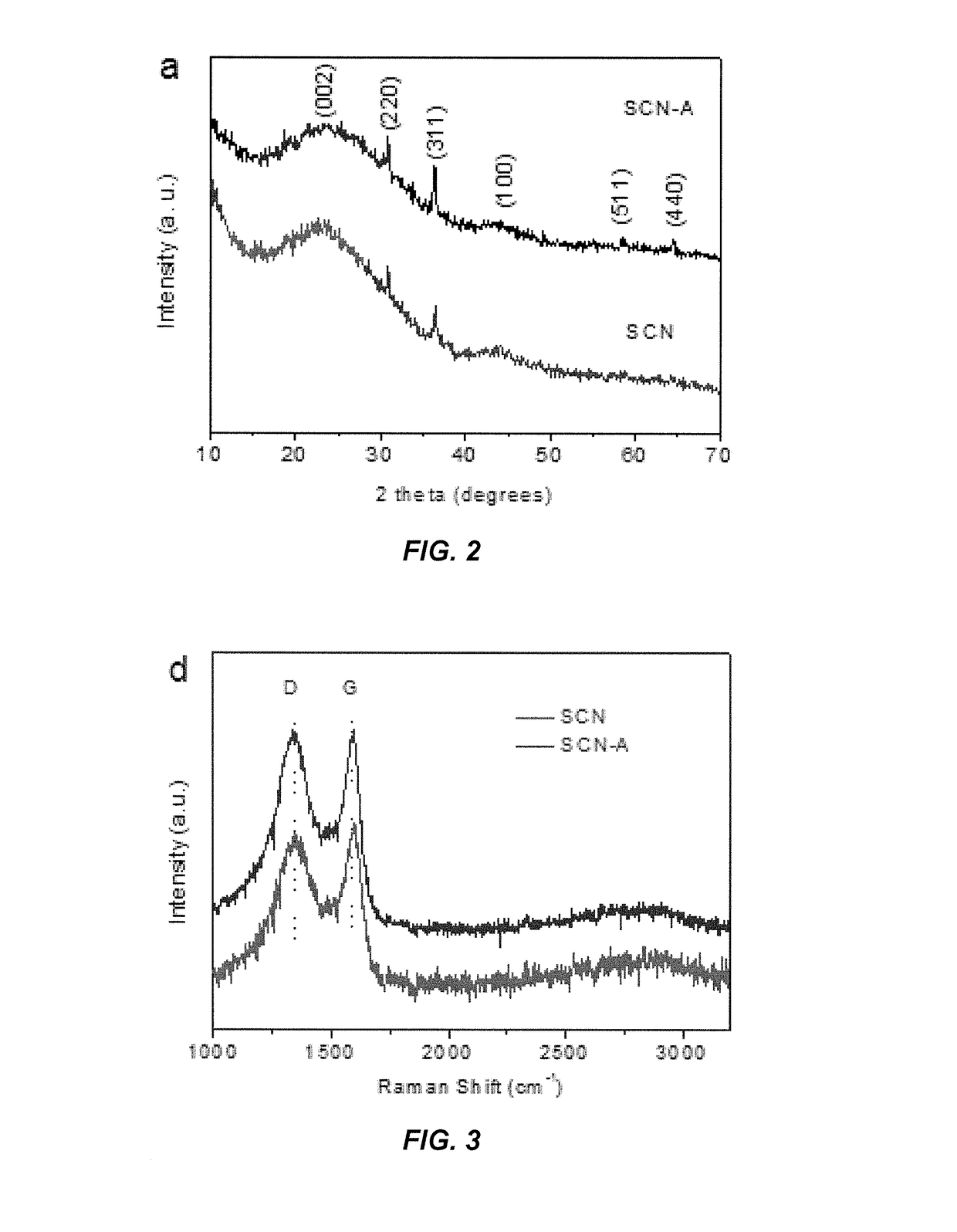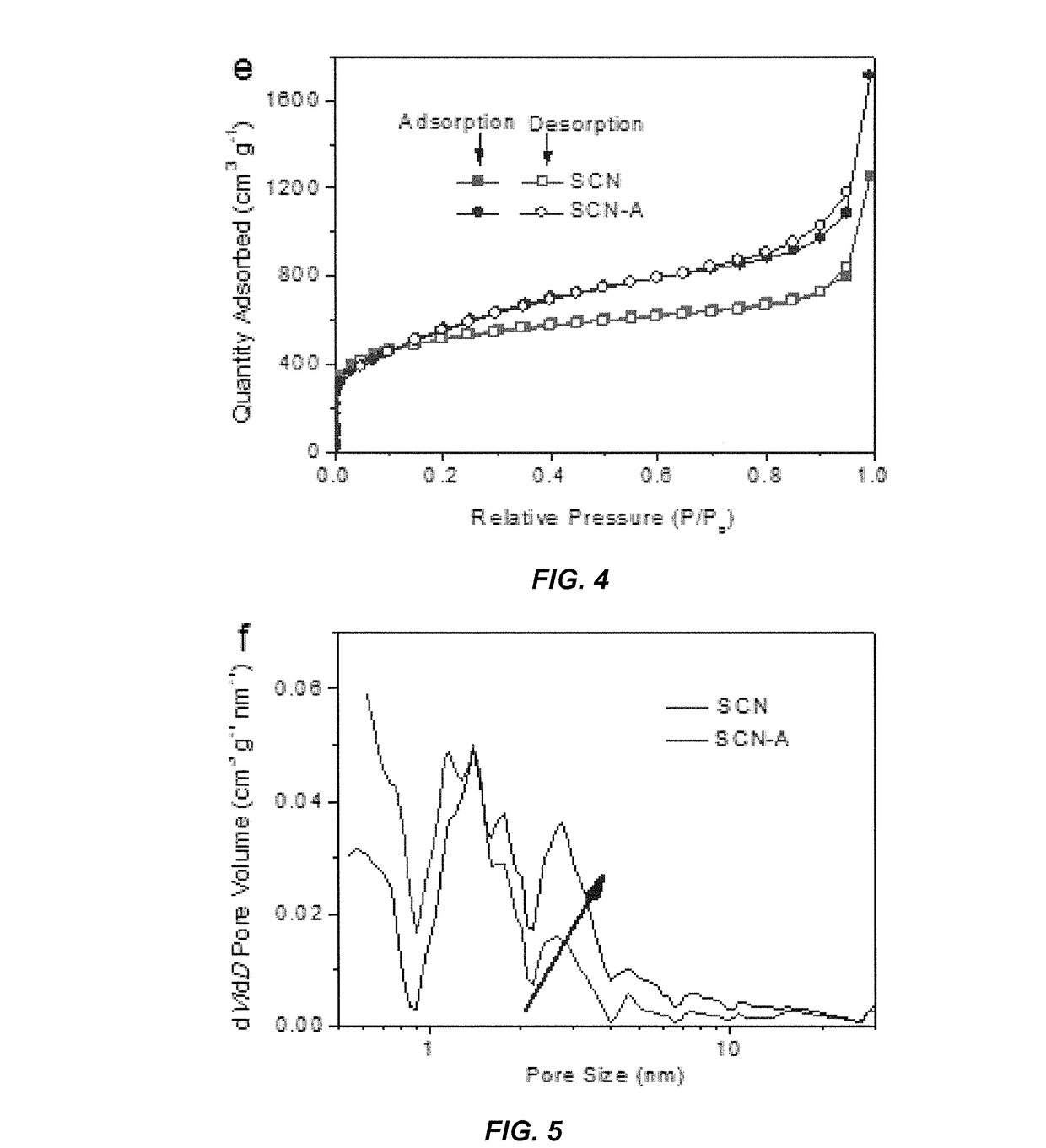Supercapattery Employing Carbon Nanosheets In The Electrodes
- Summary
- Abstract
- Description
- Claims
- Application Information
AI Technical Summary
Benefits of technology
Problems solved by technology
Method used
Image
Examples
Embodiment Construction
[0035]In one aspect, the present invention provides carbon nanosheets comprising an amorphous site, a crystalline site, or a combination of the two. Unlike the state-of-art carbon nanosheets which possess a relatively ordered and uniformed nanometer-scale structure, the overall nanometer-scale structure of the carbon nanosheets of the present invention is highly disordered. The disordered structure makes the nanosheets particularly suitable for hybrid capacitor applications, where fast and reversible adsorption at disordered sites is the targeted charge storage mechanism.
[0036]According to one embodiment, such highly disordered carbon nanosheets may be obtained by pyrolysis carbonization of peanut skins with a catalyst FeCl3 at a temperature of 800° C. (a relatively low carbonization temperature). The obtained peanut Skin derived Carbon Nanosheets are labeled as SCN. The SCN may further be activated by physically mixing with potassium hydroxide (KOH) followed by washing and drying. ...
PUM
 Login to View More
Login to View More Abstract
Description
Claims
Application Information
 Login to View More
Login to View More - R&D
- Intellectual Property
- Life Sciences
- Materials
- Tech Scout
- Unparalleled Data Quality
- Higher Quality Content
- 60% Fewer Hallucinations
Browse by: Latest US Patents, China's latest patents, Technical Efficacy Thesaurus, Application Domain, Technology Topic, Popular Technical Reports.
© 2025 PatSnap. All rights reserved.Legal|Privacy policy|Modern Slavery Act Transparency Statement|Sitemap|About US| Contact US: help@patsnap.com



